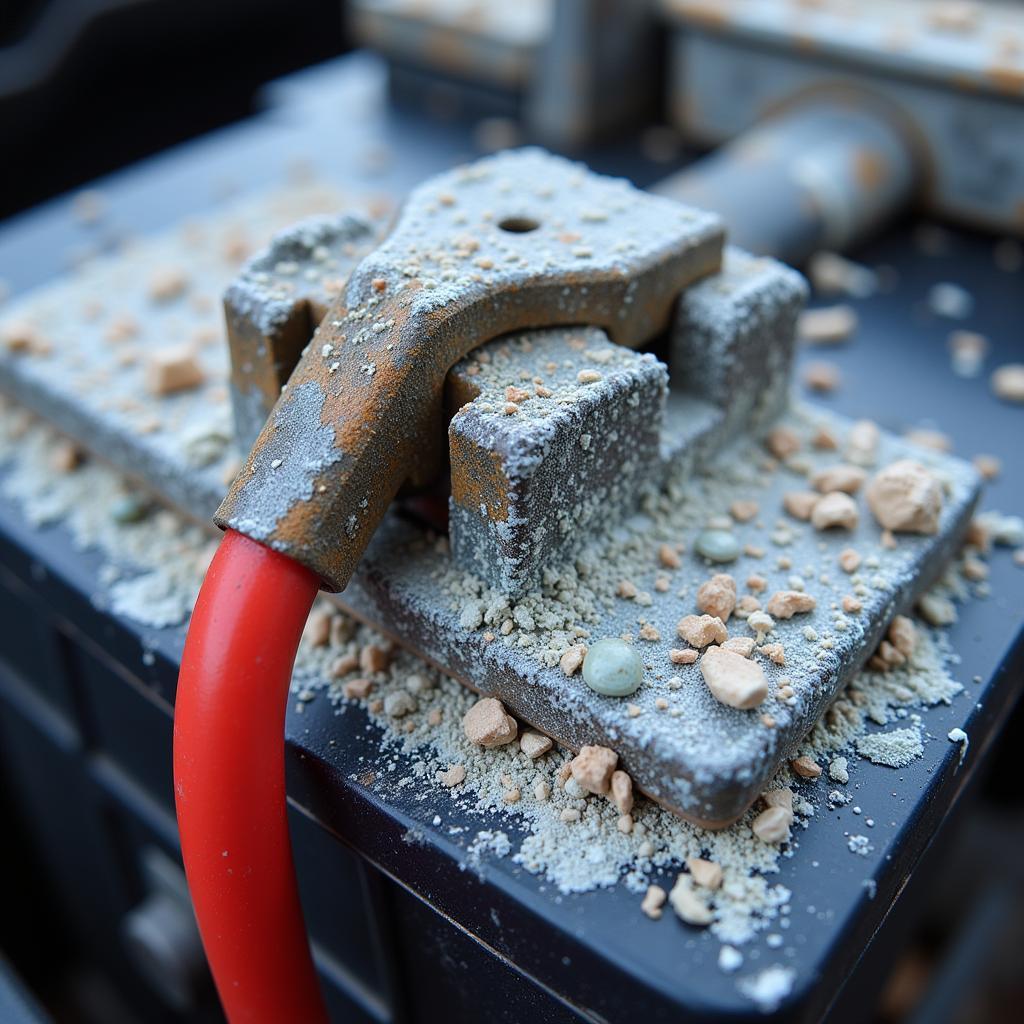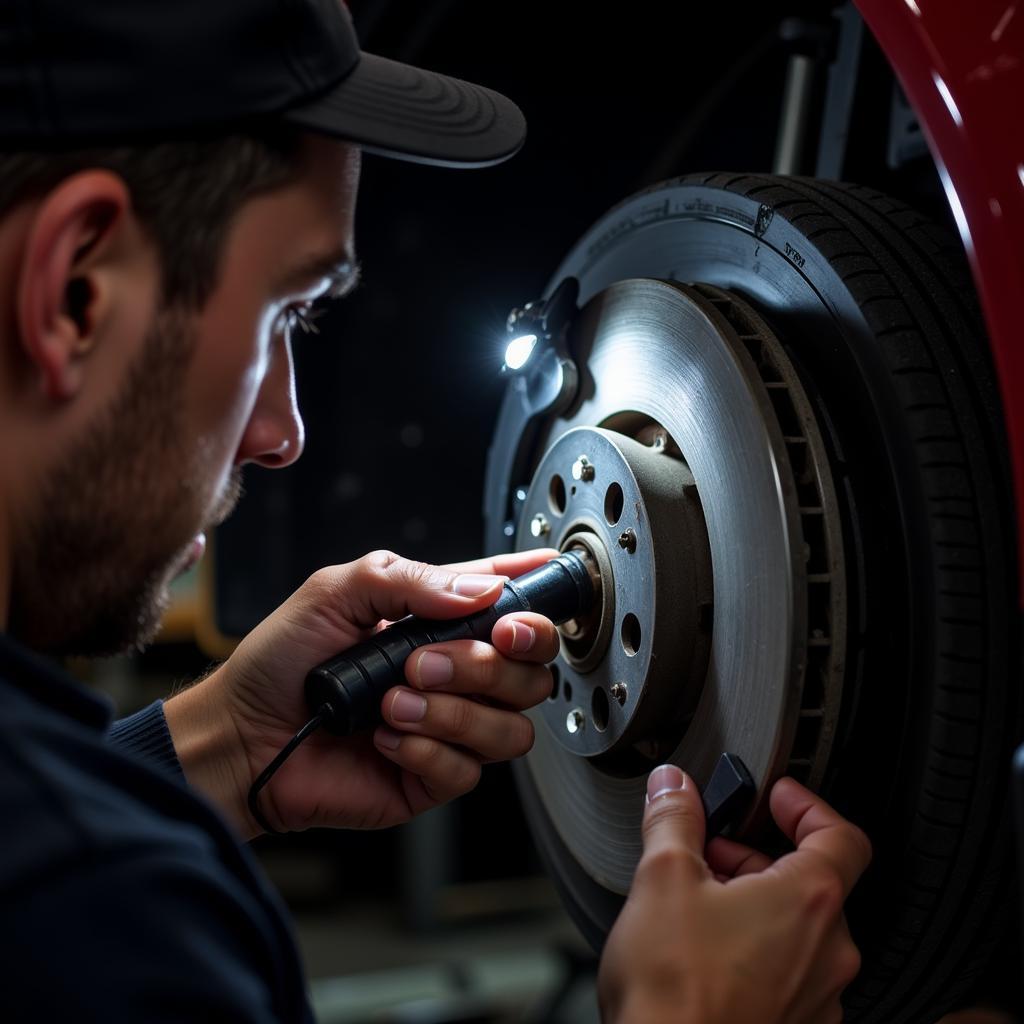A loose positive battery terminal can cause a cascade of frustrating car problems, from dimming headlights to a complete no-start. This article dives into the causes, symptoms, and solutions for this common automotive issue, providing you with the knowledge to diagnose and fix it yourself or know what to expect when seeking professional help. loose positive battery terminal effects
Why is My Positive Battery Terminal Loose?
Several factors can contribute to a loose positive battery terminal. Corrosion, caused by battery acid reacting with the terminal metal, is a primary culprit. This corrosion builds up, preventing a solid connection. Over time, vibrations from driving can also loosen the terminal clamp. Improper installation during a previous battery replacement or jump start can also be to blame.
 Close-up of corroded positive battery terminal
Close-up of corroded positive battery terminal
Another common reason is simply age. The metal of the clamp can weaken and lose its ability to grip the terminal effectively. A loose connection interrupts the flow of electricity, leading to various problems in your vehicle’s electrical system. Understanding these causes can help you prevent future occurrences.
Identifying a Loose Positive Battery Terminal: Symptoms and Diagnosis
How can you tell if your positive battery terminal is loose? The signs can be subtle or dramatic. You might notice flickering headlights, especially at idle. The car might crank slowly or not at all. Your car battery making hissing noise might also be a sign of a problem with the terminal.
A simple visual inspection can often confirm the issue. Look for signs of corrosion on the terminal and check if the clamp is securely fastened. Gently wiggle the clamp – if it moves easily, it’s loose. A multimeter can confirm a voltage drop across the connection, indicating a poor connection.
Fixing a Loose Positive Battery Terminal: A Step-by-Step Guide
Fixing a loose positive battery terminal is often a straightforward DIY task. Remember to always prioritize safety when working with car batteries.
- Disconnect the Battery: Always disconnect the negative terminal first, followed by the positive. This prevents accidental short circuits.
- Clean the Terminal: Use a wire brush and a baking soda and water solution to neutralize and remove corrosion.
- Tighten the Clamp: Use a wrench to tighten the clamp bolt. Ensure it’s snug but don’t overtighten, which could damage the battery.
- Apply Protective Coating: Applying a battery terminal protector spray can prevent future corrosion.
- Reconnect the Battery: Reconnect the positive terminal first, then the negative.
“A loose battery terminal, even if seemingly minor, can create intermittent electrical issues that are difficult to diagnose. A proper cleaning and tightening procedure can resolve these issues quickly and effectively,” advises automotive electrical expert, John Williams, ASE Certified Master Technician.
Loose Positive Battery Terminal and Electrical System Issues
A loose positive terminal can create a ripple effect throughout your car’s electrical system. Intermittent problems can occur with the radio, power windows, and other accessories. A loose connection can even cause damage to sensitive electronic components.
“Don’t underestimate the importance of a secure battery connection. It’s the foundation of your car’s electrical system, and a loose terminal can cause all sorts of headaches, from flickering battery light on dashboard to jump starting battery not working,” adds Sarah Miller, an automotive electrical engineer with over 15 years of experience. It can even affect seemingly unrelated components, like your key fob battery size.
Conclusion
A loose positive battery terminal is a relatively simple issue to address, yet it can cause significant problems if left unchecked. By understanding the causes, symptoms, and solutions, you can quickly diagnose and rectify the problem, ensuring the reliable operation of your vehicle’s electrical system. Regularly inspecting and cleaning your battery terminals can prevent future issues and keep your car running smoothly. Remember, a secure connection is key to a healthy electrical system.

